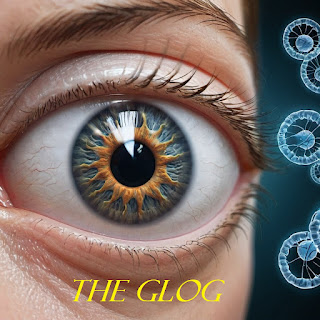GUEST AUTHOR
DR. GHUNCHA KHATOON
DEPT OF COMMUNITY MEDICINE, AJMAL KHAN TIBBIYA COLLEGE,
AMU, ALIGARH, INDIA
Undetected
glaucoma is a challenging public health problem as it increases the risk of
visual impairment, even in those cases where early detection could be
beneficial. The loss of vision in a large population can affect the
quality-of-life and socio-economic condition of the community.
The
levels of undetected glaucoma globally are not clear. Reported prevalence
ranges between 33% and 98%. However, a meta-analysis has shown that nearly half
of all glaucoma cases are undetected world-wide. And, this number is expected
to increase in the future.
Understanding
these levels can spur the development of effective public health strategies and
policy-level changes (e.g., screening programs) to prevent avoidable blindness.
The
meta-analysis reviewed 61 articles from 55 population-based studies (n ¼ 189
359 participants; n ¼ 6949 manifest glaucoma). [1]
Variation in Undetected Glaucoma by Geographical Region:
For
manifest glaucoma, the highest proportion of previously undetected cases was
observed in Africa and the least in Oceania. Africa (odds ratio [OR], 12.70;
95% confidence interval [CI], 4.91e32.86) and Asia (OR, 3.41; 95% CI,
1.63e7.16) had significantly higher odds of undetected manifest glaucoma as
compared with Europe.
For
POAG, the highest proportion of previously undetected cases was observed in
Africa and the least in North America. Africa (OR, 8.84; 95% CI, 2.64e29.62)
and Asia (OR, 4.66; 95% CI, 2.07e10.51) showed significantly higher odds of
undetected POAG as compared with Europe, whereas the differences between other
geographical regions and Europe were statistically insignificant.
Variation in Undetected Glaucoma by Human Development Index (HDI):
Countries
with low HDI had undetected cases in the proportion of 94.56% (95% CI,
92.13e96.27), compared to 70% in countries with medium to very high HDI.
Countries with medium HDI (OR, 0.20;95% CI, 0.10e0.42), high HDI (OR, 0.20; 95%
CI, 0.09e0.47), and very high HDI (OR, 0.12; 95% CI, 0.06e0.24) showed
significantly lower odds of undetected manifest glaucoma as compared with
countries of low HDI.
Variation in Undetected Glaucoma by Ethnicity:
Africans
(OR, 5.55; 95% CI, 2.41e12.78) and Asians (OR, 2.62; 95% CI, 1.26e5.48) showed
significantly higher odds of undetected manifest glaucoma as compared with
people of European ancestry.
Projected Number of Undetected Primary Open-Angle Glaucoma
Cases:
Asia
alone accounts for 58.4% of all undetected POAG cases worldwide because of its
sheer population size.
The
number of undetected POAG cases is projected to increase by 53.2% to affect
67.06 million (95% CI, 64.11e69.59 million) people by 2040.
The
largest increase will be seen in Africa (86.3%), whereas the highest number of
undetected POAG cases in 2040 will remain in Asia.
Variation in Undetected Glaucoma by Asia Sub-region:
In
Asia, South Asia (OR, 2.19; 95% CI, 1.01e4.77) showed significant higher odds
of undetected manifest glaucoma cases as compared with East Asia, whereas the
differences between the other sub-regions and East Asia were insignificant.
Variation in Undetected Glaucoma by Other Factors:
The
odds of undetected POAG were lower in urban habitations (OR, 0.52; 95% CI,
0.27e0.99) as compared with rural habitation globally.
Reasons
for undetected glaucoma not only include socio-economic factors and better
medical facilities, but also from a complex interplay between multiple factors
that include individual, community, and policy-level short-comings.
In
a study performed in USA in 2014, approximately 2.4 million persons had
undetected and untreated glaucoma. Overall, prevalence of both diagnosed and
undiagnosed glaucoma was much higher in minorities (African-Americans and
Hispanics) and the elderly. [2]
REFERENCES:
- Soh
Z, Yu M, Betzler BK, Majithia S, Thakur S, Tham YC, Wong TY, Aung T, Friedman
DS, Cheng CY. The Global Extent of Undetected Glaucoma in Adults: A Systematic
Review and Meta-analysis. Ophthalmology. 2021 Oct;128(10):1393-1404. doi:
10.1016/j.ophtha.2021.04.009. Epub 2021 Apr 16. PMID: 33865875.
- Shaikh
Y, Yu F, Coleman AL. Burden of undetected and untreated glaucoma in the United
States. Am J Ophthalmol. 2014 Dec;158(6):1121-1129.e1. doi:
10.1016/j.ajo.2014.08.023. Epub 2014 Aug 22. PMID: 25152501.


































